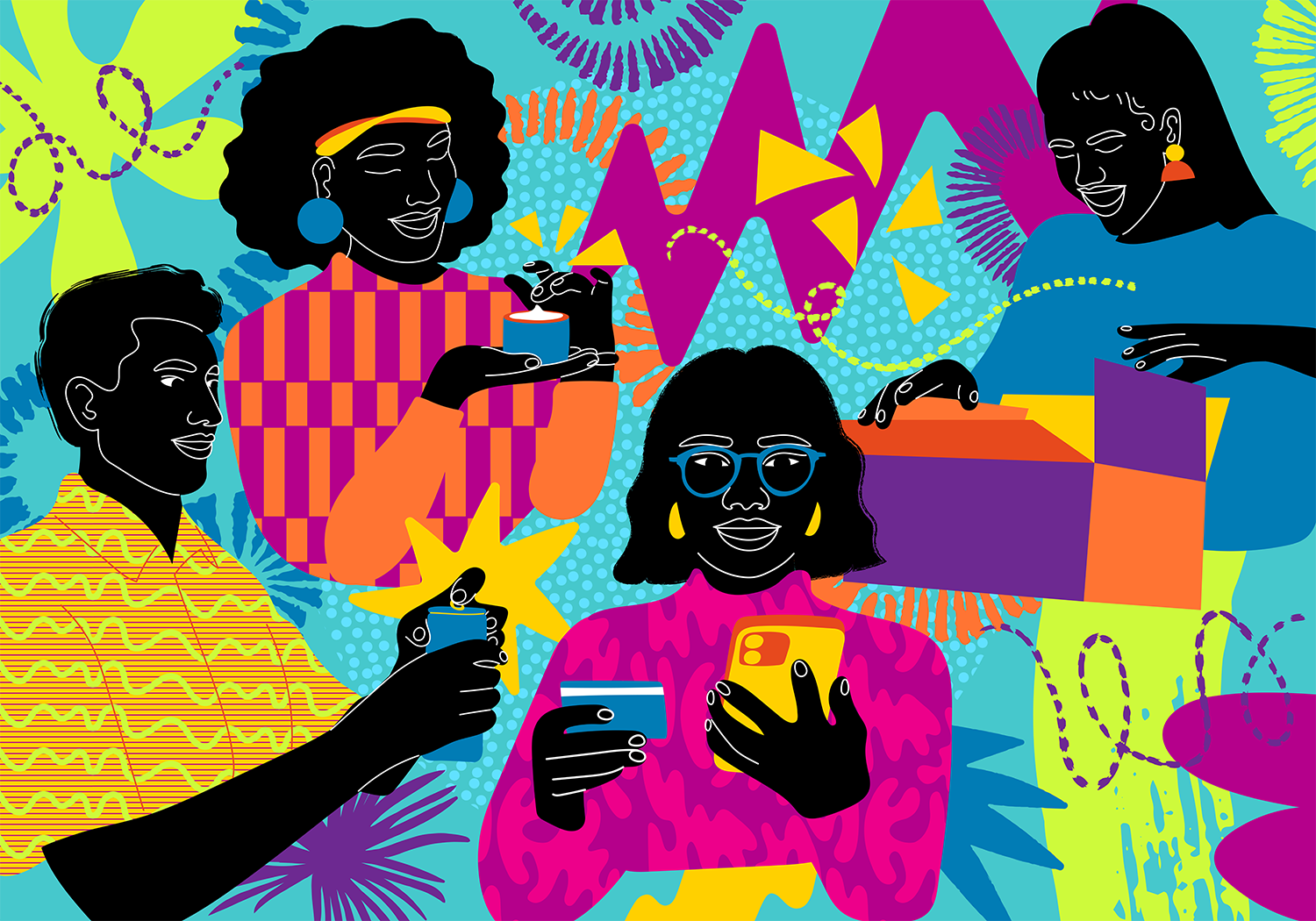The basics to know about illustration for branding.
In this article
What are the basics you need to know about illustration for branding? In this resource we explain the industry, what you’ll need in your portfolio, and briefs, licences and contracts for branding commissions.
What is Branding illustration?
Brands care a lot about their image. How a company chooses to brand its products or services has an enormous effect on how well they sell, and what kinds of customers they attract, and illustration is a great way to communicate the right message to the right people.
Branding identifies one company from another – it can attract the right customers, give a company a personality and build brand recognition.
All different kinds of companies want to present their products and services in the best way possible to their customers, whether that’s through their website, their packaging, or their advertising, they want to show a consistent brand message.

What you need in your portfolio
It can help to begin with thinking about where you see branding. Frequently it’s on products themselves, on the associated packaging, websites and marketing materials. The illustrations could be depicting people, situations, characters, animals, decorative elements and more.
You can display a single branding illustration in your portfolio, or also create a small series of related illustrations that are similar in colour, theme and tone and display them across some of the different formats a company might use. The difference in the impact that will have on a potential client is enormous.
Adding motion to your branding work, either by yourself or working with an animator can make it even more appealing to clients, as branding will frequently extend to moving images in the form of social media ads, explainer videos or commercials.
Logos
Logos are important for every business. You might not think that your style of illustration is suitable for a logo, but there are so many different kinds of companies that want to communicate with different customers, you might be surprised. Showing a couple of logo examples in your folio expands what you can offer your potential clients.
Corporate clients
Larger corporate clients will hire a design agency to oversee their branding. The design agency will then find the necessary creative freelancers for the project. So if you want to work with corporate clients, presenting your work to design agencies, branding agencies and advertising agencies is the best way to be considered for these opportunities.
Many are well known and easily found, but don’t discount smaller, local agencies. You will have more competition if you exclusively aim for the big names.
Sectors that hire illustrators for their branding include food, drink, tech, communications, utility companies, products, restaurants, shops, events, charities and corporate clients.
Briefs
Corporate branding briefs can be exceptionally detailed. This could be listing details such as colour palettes, acceptable line weights, proportions and spacing, and how to use typography. They may have examples of how the brand uses illustration already.
Briefs for branding will generally be communicating about the company and their values. They might tell you what their goal is for the brand, about their audience and what kind of people they serve and how they want the brand to be perceived: fun or youthful, or sporty, or sophisticated.
Fees, Licenses and Contracts
Fees for branding projects will vary massively depending on a few factors:
- The scope of the project; you might be asked to design a logo, or a website header, some secondary illustrations, icons, a logo, a background pattern, and brand related assets.
- The size of the company; a small independent shop will have limited reach, but your work will be seen by enormous amounts of people if you work for a large multinational corporation.
- How much input the client needs on the project; if they want the ability to ask for a lot of changes and give you a lot of feedback to act on, you should charge accordingly.
Clients may be fine with an exclusive licence to the work, but sometimes a company wanting bespoke branding artwork will ask for all rights in your illustrations. From their point of view this makes sense, because the work is made specifically for their brand and they don’t want anyone else to use it (although an exclusive licence should be sufficient for them). If they ask for an assignment of rights then the fee should reflect the extensive value of those rights.
As always, a contract is important to have, and illustrators may be contracting with the design company or directly with the end client company via the design agency.
Logos
There is a lot of competition to design logos cheaply with the rise of discount websites, but there will always be clients that want something unique. The size of the company is the main factor in pricing a logo. A small company will have lower budgets, but you should charge more for bigger companies that span multiple territories.
AOI Members can explore the area of Branding illustration in more depth in the How To Get Into Branding Illustration publication.
The AOI Advertising Directory, updated yearly, lists advertising and design companies and, unlike the majority of mailing lists, the AOI speaks directly to the commissioners and passes on information about the kind of work they’re looking for.
AOI Members have access to all Inside Illustration content.
Go here to read the Publishing Season: Book Covers Basics
Go here to read the Site Specific Illustration Basics
Go here to read the Illustration for Children Basics
Go here to read the Branding Illustration Basics
Go here to read the Editorial Illustration Basics
The AOI would like to make resources accessible to all members. If you would like an alternative format please ask.
